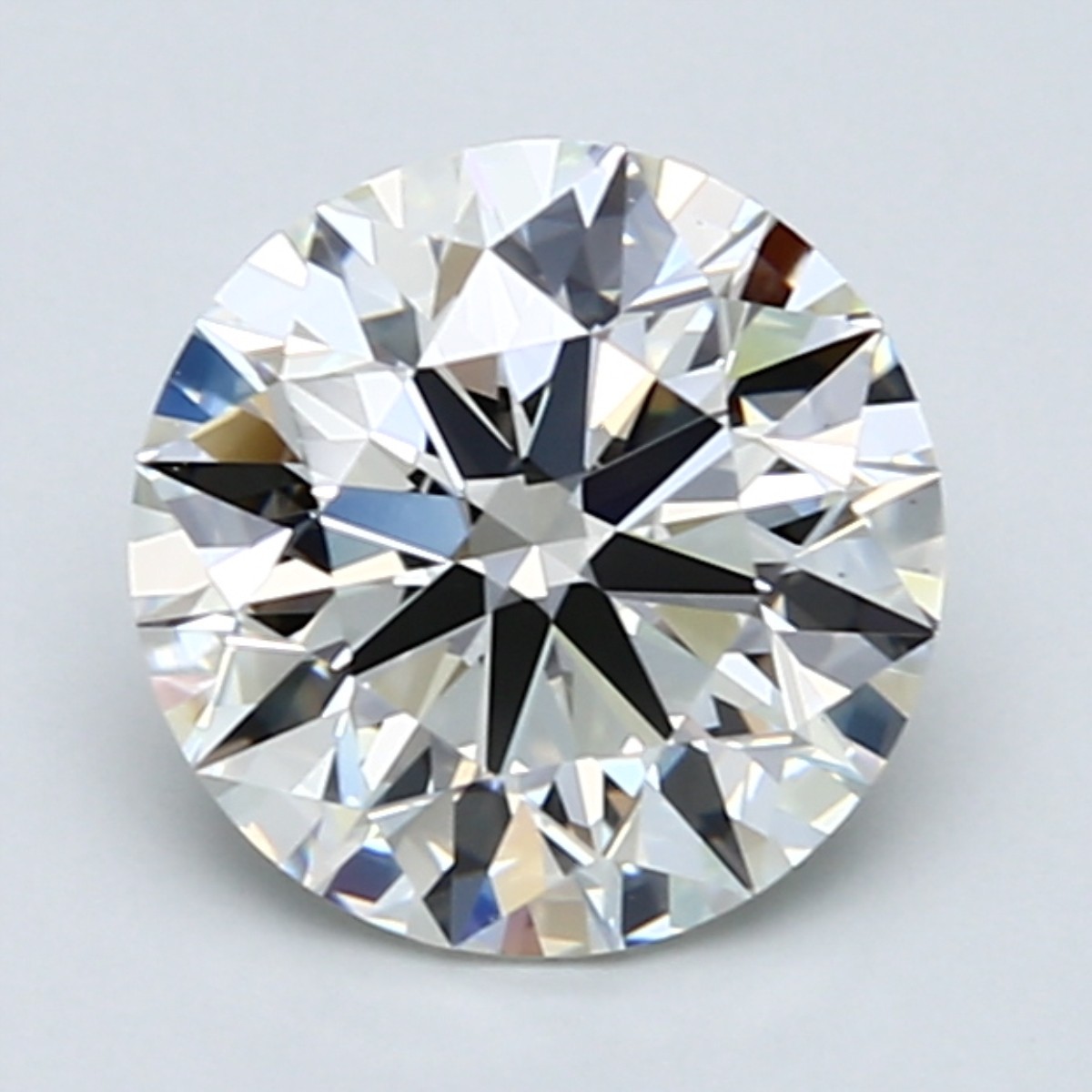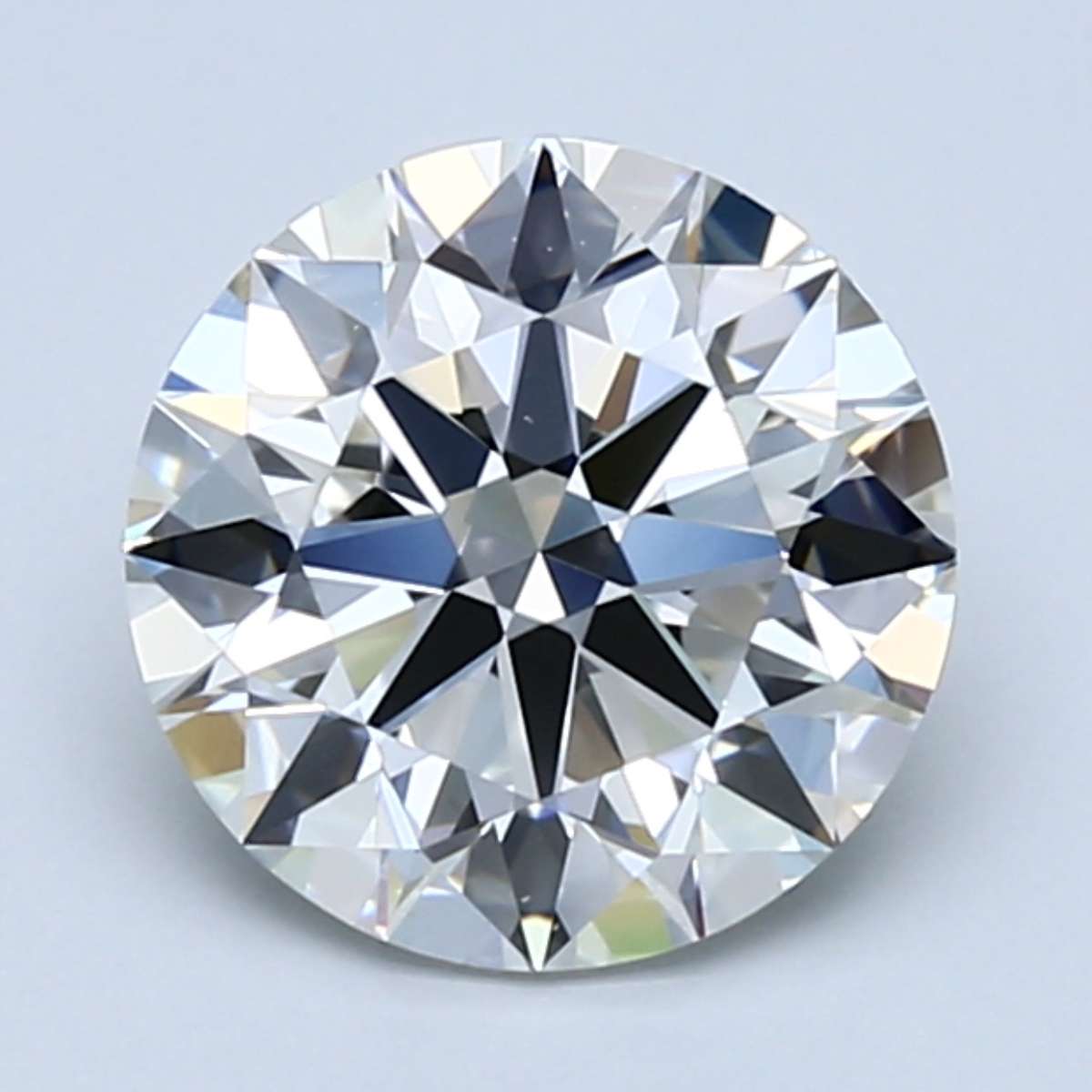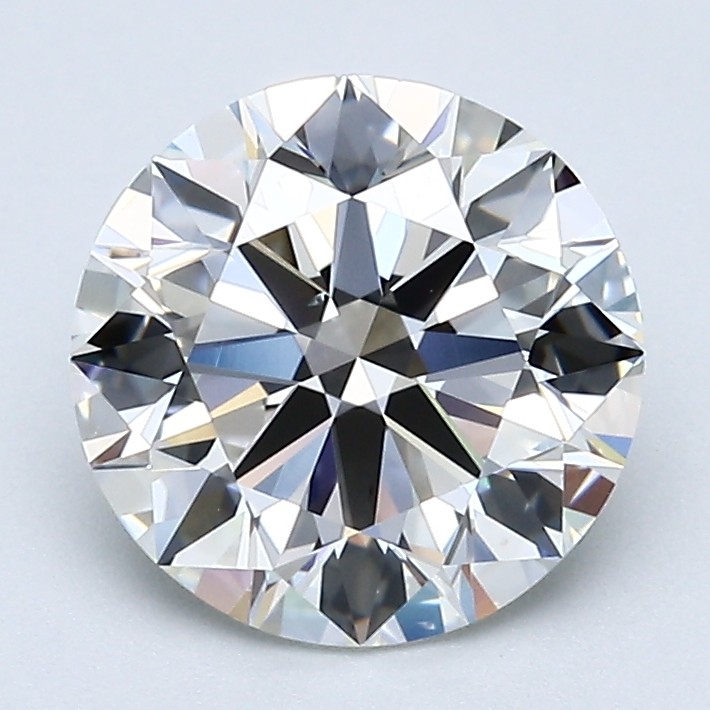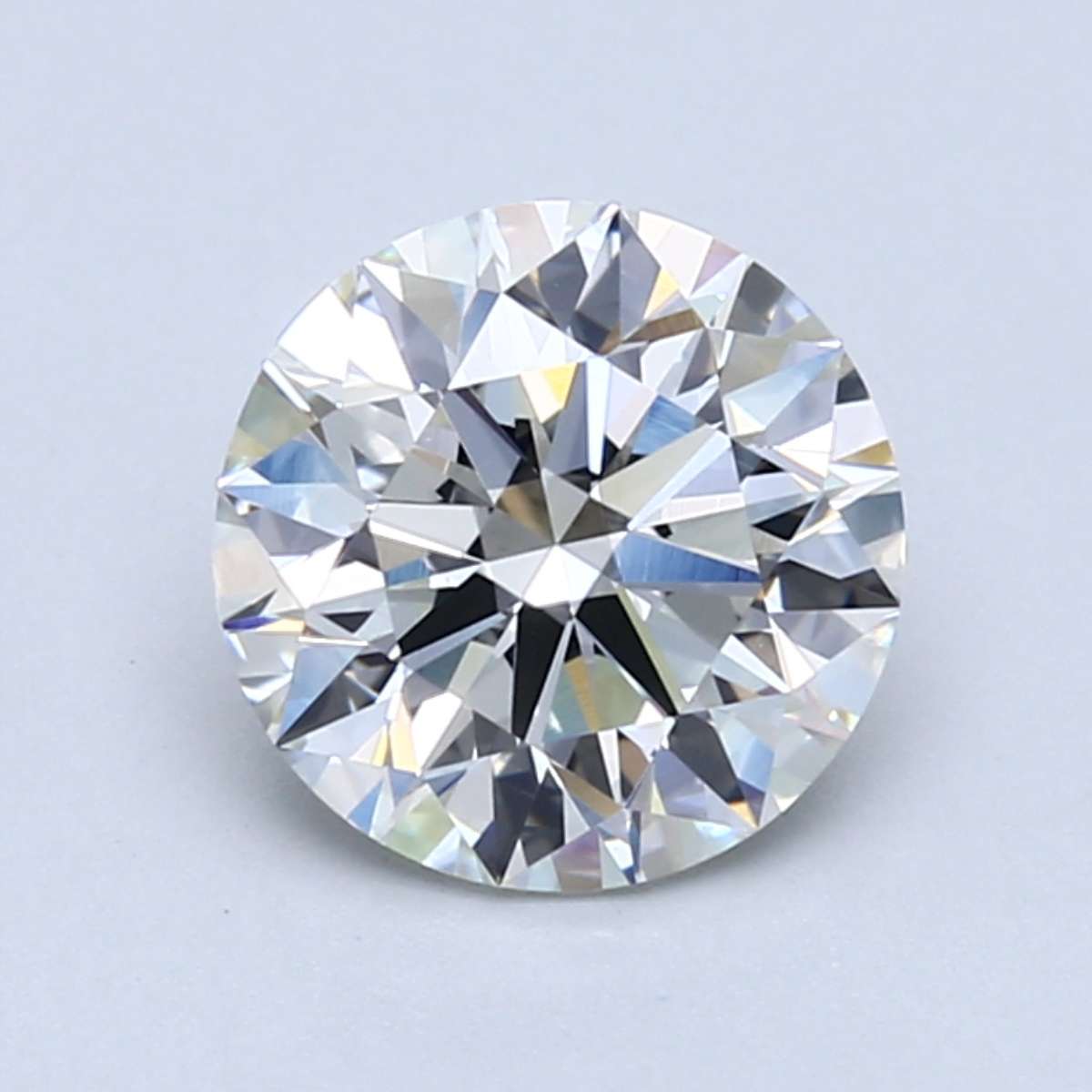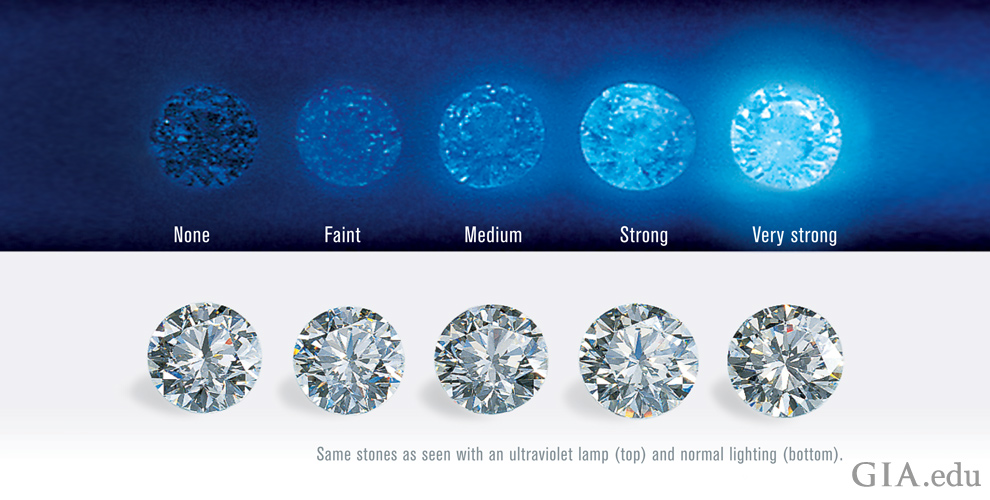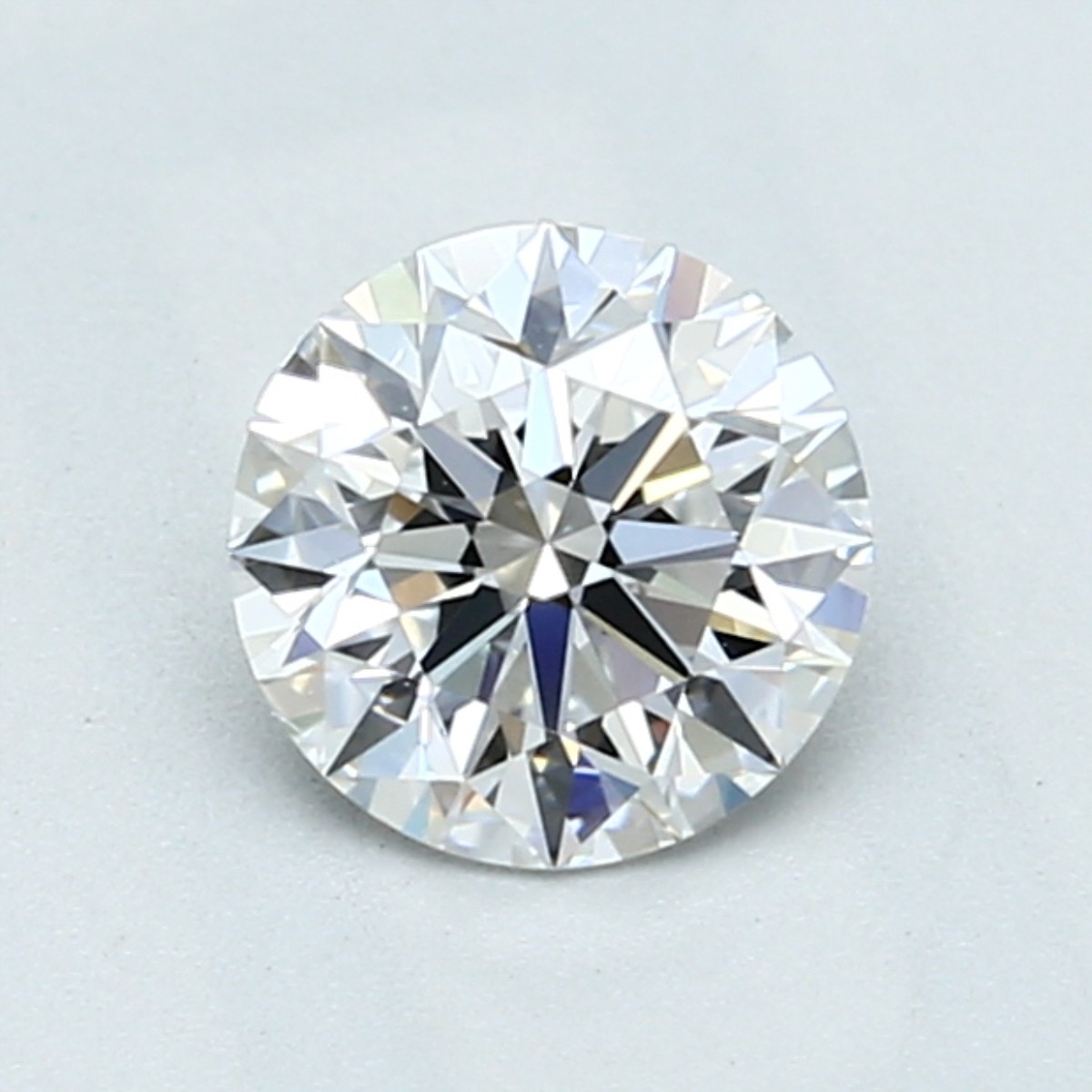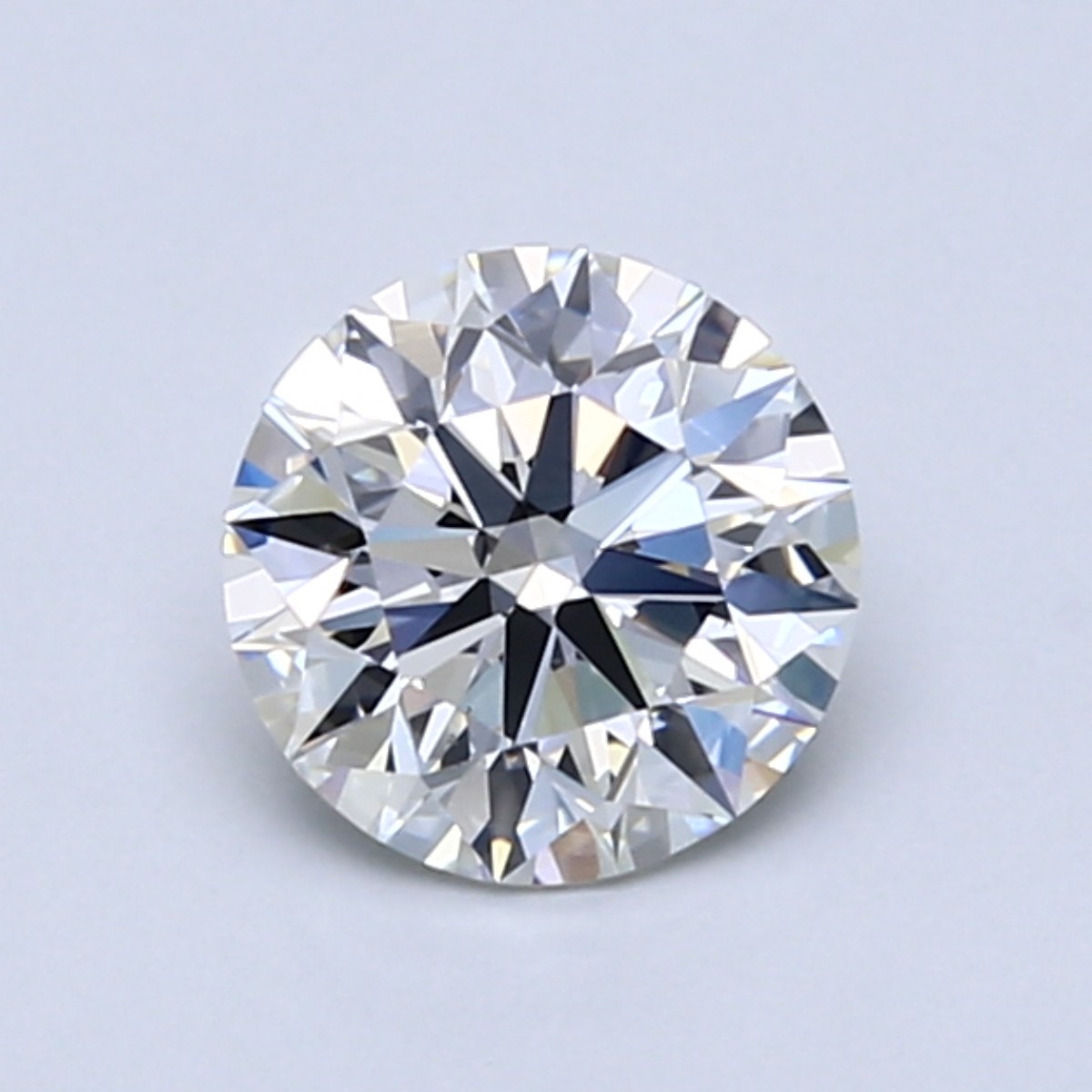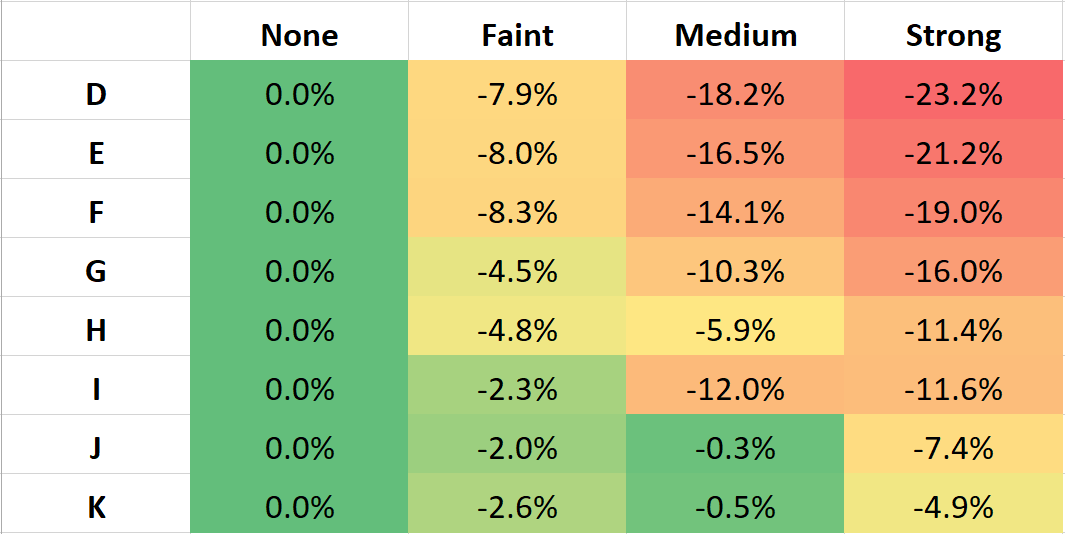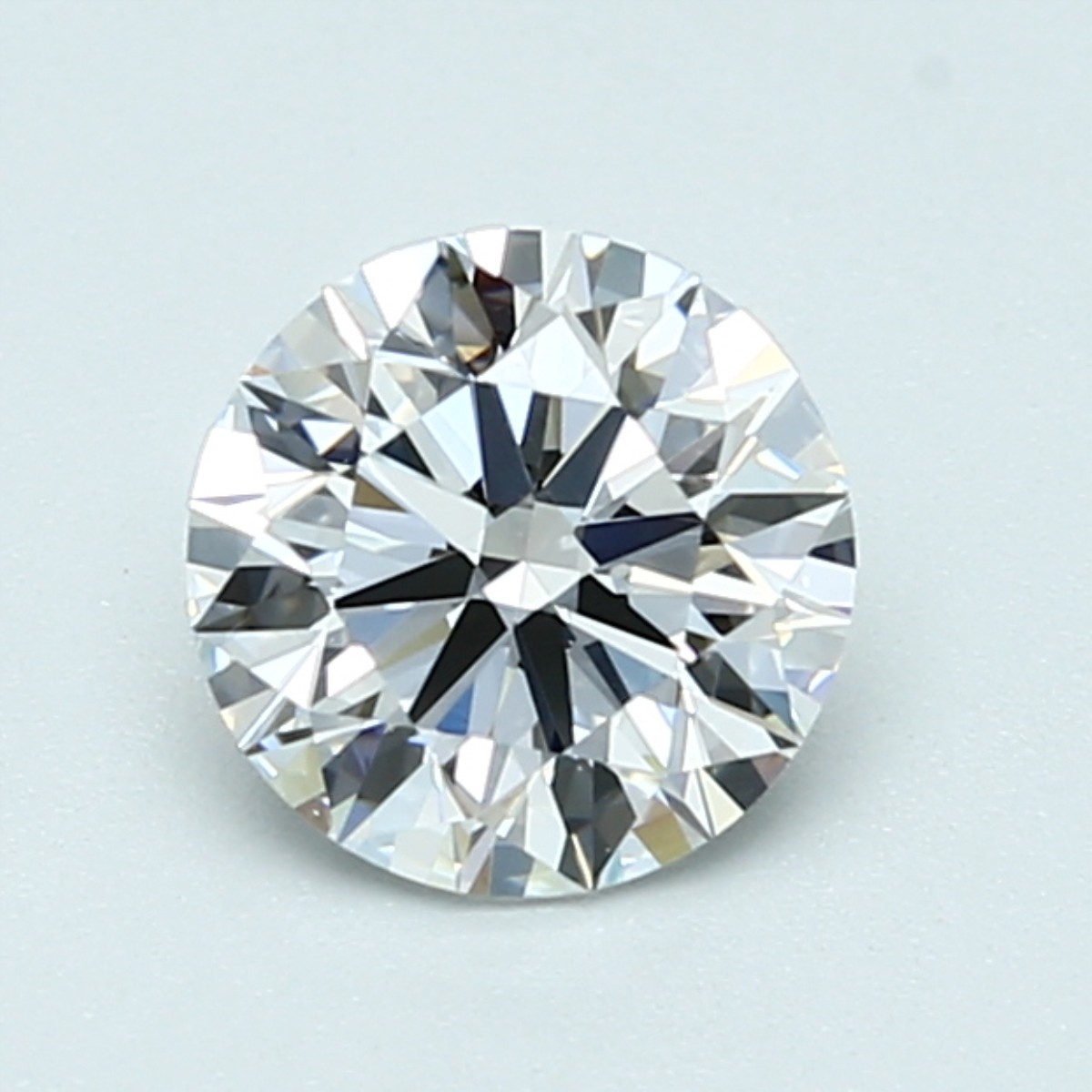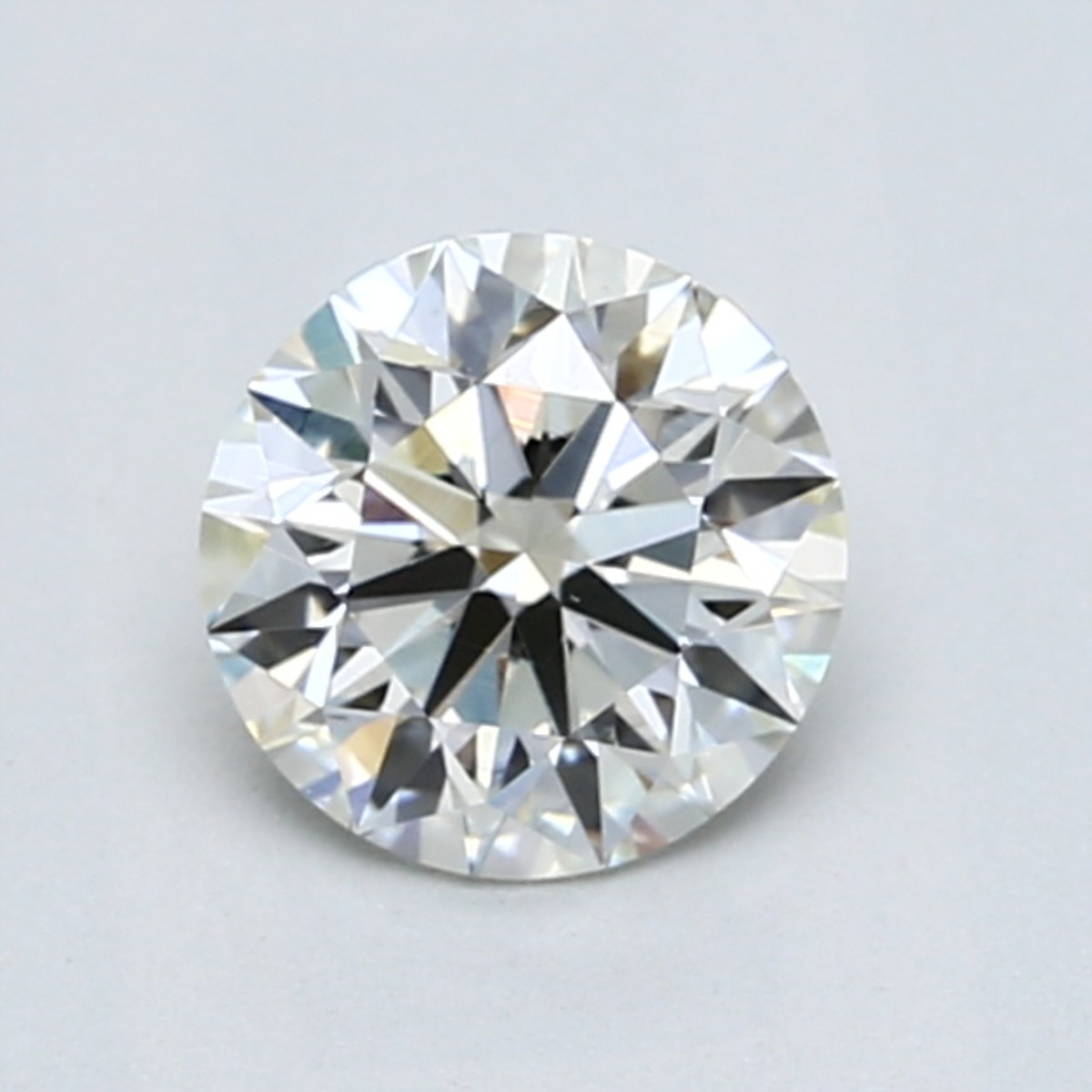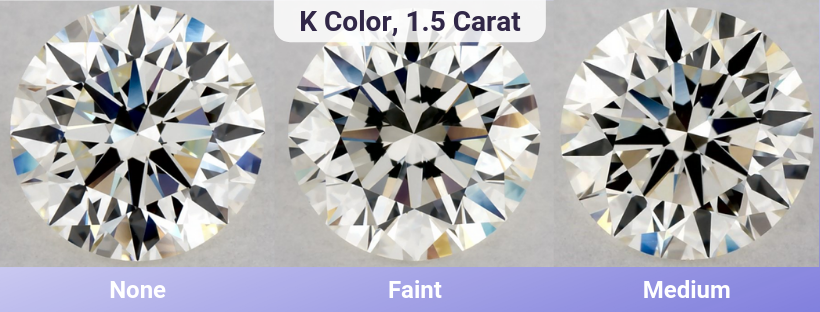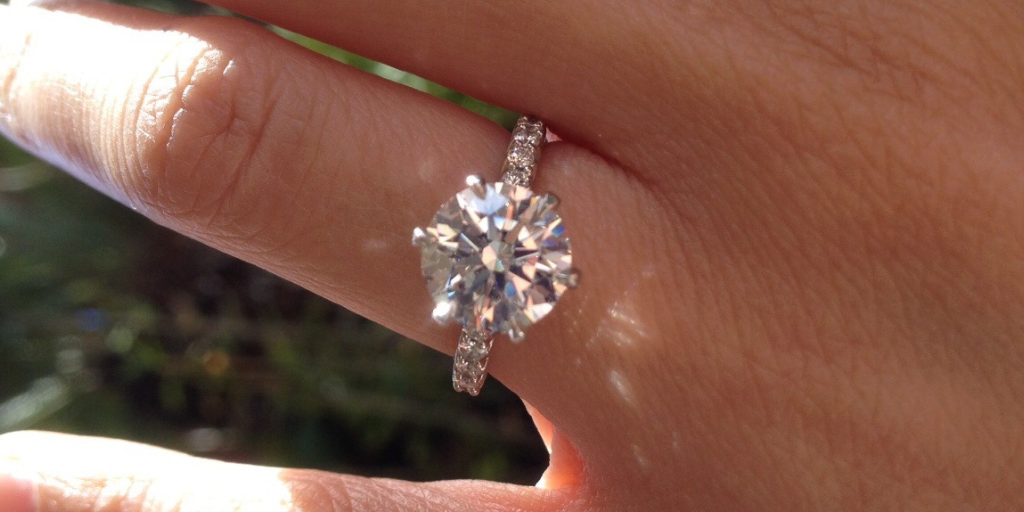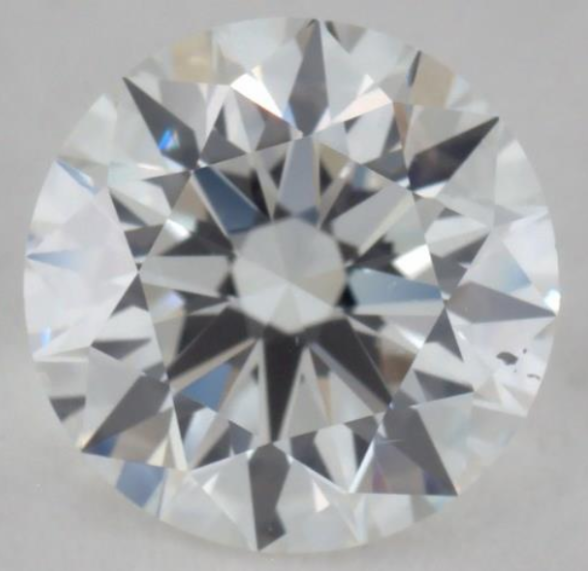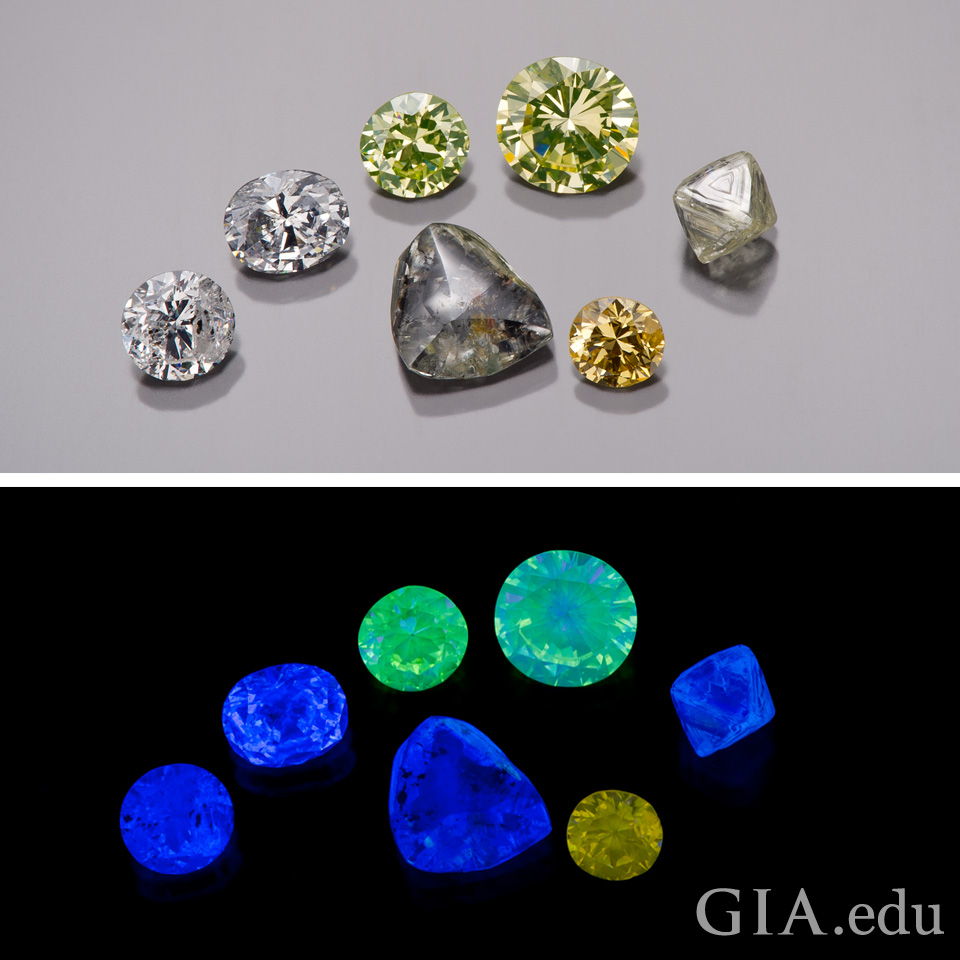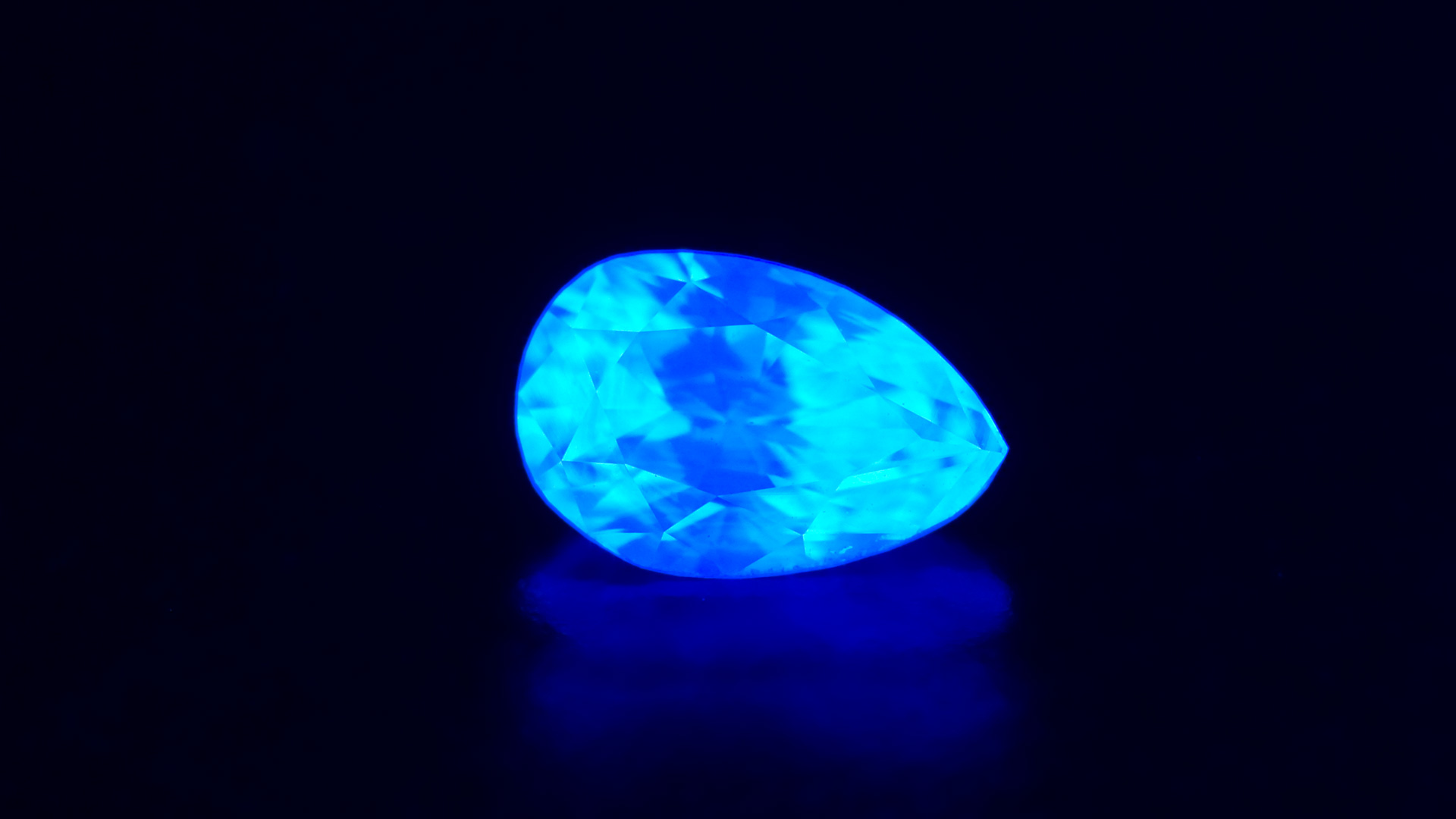June 3rd 2023
Diamond Fluorescence: What You Need to Know
By Devin Jones
Below we'll show you real statistics from diamond shoppers on StoneAlgo and help you understand when diamond fluorescence is a helpful cost saving feature, and when it's a terrible mistake.
🛡️ Check your diamond 💎 Search 2M+ diamonds
What is diamond fluorescence?
Diamond fluorescence is a phenomenon that occurs when some diamonds emit a glow when exposed to ultraviolet (UV) light. This glow can be blue, yellow, or green. In most cases, fluorescence has no noticeable effect on the appearance of a diamond. However, in some cases, it can make a diamond appear hazy or milky.
Why do some diamonds have fluorescence?
The presence of fluorescence in a diamond is caused by the presence of trace elements, such as nitrogen or boron, in the diamond's structure. These elements absorb UV light and then re-emit it as visible light. The color of the fluorescence depends on the type of element present in the diamond. Nitrogen typically produces blue fluorescence, while boron typically produces yellow or green fluorescence.
Here are some additional details about the causes of diamond fluorescence:
- Nitrogen: Nitrogen is the most common cause of diamond fluorescence. It is found in about 75% of all diamonds. Nitrogen typically produces blue fluorescence.
- Boron: Boron is a less common cause of diamond fluorescence. It is found in about 2% of all diamonds. Boron typically produces yellow or green fluorescence.
- Other elements: Other elements, such as hydrogen, carbon, and oxygen, can also cause diamond fluorescence. However, these elements are much less common than nitrogen and boron.
It is important to note that not all diamonds with fluorescence will glow under UV light. The intensity of fluorescence can vary from diamond to diamond. Diamonds with faint fluorescence may not glow at all, while diamonds with strong or very strong fluorescence may glow very brightly.
Comparing Fluorescence Grades
The intensity of fluorescence is measured on a scale of none, faint, medium, strong, and very strong. Diamonds with none or faint fluorescence are the most common. Diamonds with strong or very strong fluorescence are less common.
The below images show I color diamonds with fluorescence grades of none, faint, medium, and strong.
Click on a diamond for more details and videos
Does Fluorescence Impact Color?
One interesting side effect of fluorescence is that a little fluorescence can make a diamond appear whiter. The blue glow emitted by fluorescent diamonds can actually cancel out the yellow or brown tints that are often found in diamonds. However, it is important to note that the effect of fluorescence on a diamond's appearance can vary depending on the intensity of the fluorescence and the color of the diamond.
| Fluor Grades | % on StoneAlgo | Pairs Best With |
|---|---|---|
| None | 67.4% | All color grades |
| Faint | 14.9% | G or lower |
| Medium | 10.3% | H or lower |
| Strong | 4.4% | J or lower |
| Very Strong | 0.85% | Avoid completely |
Above is a table showing the ideal fluorescence and color grade combinations. Because stronger fluorescence can help to cancel out slightly more color, the lower color grades like J and K pair well with Faint, Medium, and even Strong Fluorescence. However, too much fluorescence can actually be a bad thing (as we'll see in a second).
As you might expect, the way in which fluorescence impacts the appearance of a diamond's natural color grade has a direct impact on the price of that stone. Our diamond price estimates factor in these differences - you can learn more by running a free diamond check on StoneAlgo or searching our database of over 2 million diamonds sourced from a number of top-rated online jewelers.
🛡️ Check your diamond 💎 Search 2M+ diamonds
How does diamond fluorescence affect price?
Some diamonds benefit from a little fluorescence, while others don't. For this reason, D color diamonds with fluorescence sell for a significant discount while J color diamonds with fluorescence sell for a far smaller discount.
While the fluorescence may not negatively impact the D color diamonds whiteness, it is sometimes viewed as an "impurity" by the picky diamond buyers who are searching for a perfect D color diamond.
Meanwhile, near colorless diamonds (G, H, I, and J) can actually benefit from a little fluorescence because it helps them appear slightly whiter (especially J and lower diamonds).
The two diamonds shown above are both 1 carat D color VS1 Clarity diamonds, however the diamond shown on the left has no fluorescence and costs $9,764 while the diamond shown on the right has Strong fluorescence and costs $7,194 (26% less).
To see how diamond fluorescence affects price for various diamond shapes and color grades, check out our diamond price calculator where you can play with real-time diamond data and see how fluorescence affects price.
🛡️ Check your diamond 💎 Search 2M+ diamonds
Prices for Diamond Fluorescence & Color Combinations
Below is a chart depicting the various discounts that shoppers can expect to receive for fluorescence grades within a particular color grade.
For example, D color diamonds with Medium fluorescence cost 18.2% less than D color diamonds with None fluorescence. For a J or K color diamond, medium fluorescence is priced almost equal to None and Faint fluorescence.
As you can clearly see, the higher color grades like D and E price significantly higher for None and Faint fluorescence than for Medium and Strong fluorescence. For lower color grades the pricing is fairly flat as many buyers tend to favor some fluorescence to help offset the natural color present in J or K color diamonds.
We did not study the changes in pricing for Very Strong fluorescence as there were not enough samples (only 0.6% of diamonds) in the study to yield clear results. The diamonds studied were all GIA triple excellent diamonds in the 1 carat range with VS1 clarity. The price changes are based on the average price per carat for each color grade.
🛡️ Check your diamond 💎 Search 2M+ diamonds
None Fluorescence (present in 67% of diamonds)
Based on our diamond database of over one million diamonds, None (sometimes called NON or No Fluorescence) is by far the most common degree of fluorescence intensity with about 67% of diamonds graded as such. When the GIA grades a diamond as having None fluorescence, it doesn’t necessarily mean there isn’t any fluorescence whatsoever. Instead, it means that the fluorescence is so faint that it is essentially non-existent. None of the diamond color grades will be affected by None fluorescence, we think of it as the baseline to which we can compare all other fluorescence grades. The below diamonds both have None fluorescence, the one on the left is a 1 carat D color diamond and the one on the right is a 1 carat J color diamond.
As you can see from the fluorescence/color price table mentioned in the prior section, None fluorescence commands a higher price than any other fluorescence grade but may command a slightly lower price in J color and lower on a case by case basis. This pricing phenomenon is due to the fact that fluorescence can actually help to offset the appearance of color in a diamond and the color grade at which people begin to perceive color is typically the J/K range. So, a K color diamond with Medium fluorescence is viewed by some buyers as preferable to a K color diamond with None fluorescence since the former will appear slightly whiter when exposed to sunlight.
Recommended color grade pairings for None fluorescence: all diamond colors, but especially recommended for colorless diamonds.
Faint Fluorescence (present in 18% of diamonds)
About 18% of GIA certified diamonds available online are graded with Faint fluorescence, making it the second most common fluorescence grade. As its name implies, Faint fluorescence means that the diamond exhibits a minimal amount of fluorescence when exposed to UV light and that the intensity of this fluorescence is not significant enough to seriously affect the diamonds appearance. However, Faint fluorescence is often recommended for buyers of lower color grades because it can help to slightly offset some of the color saturation associated with those diamonds (specifically when they are exposed to natural sunlight).
Diamonds with Faint fluorescence should also typically command a lower price than those with None fluorescence in the higher color grades (D – I), but may command the same price or even a premium to None fluorescence in certain diamonds in the near colorless or faintly colored range. While we typically recommend fluorescence for near colorless grades and lower, E color and F color diamonds with faint fluorescence are great value plays and will look icy white in any color of engagement ring setting.
Recommended color grade pairings for Faint fluorescence: all diamond colors, but especially recommended for G or lower color grades to offset minor color saturation.
Medium Fluorescence (present in 8.7% of diamonds)
Medium fluorescence is typically the level at which buyers become nervous that the diamond’s appearance will be negatively impacted by the intensity of the diamond’s fluorescence in colorless diamonds (D – F color). However, diamonds with Medium fluorescence can offer great value in the right situations and even positively impact lower color grades like J or K color that may otherwise show some color saturation. While the impact is typically minimal and only apparent under UV light, Medium fluorescence (sometimes called MED on a certificate) helps to offset the (typically) yellow color of a diamond by adding a blue hue to the stone in natural sunlight or UV light. This makes the diamond appear whiter and can often give the diamond more life. Based on our research, I color diamonds with medium fluorescence are a great value play that can also look totally white depending on the carat weight and shape of your diamond.
Recommended color grade pairings for Medium fluorescence: H or lower color grades, but especially recommended for J or lower color grades to offset color saturation.
Strong Fluorescence (present in 5.4% of diamonds)
In certain cases diamond fluorescence can negatively impact a diamond by making it appear hazy or oily when exposed to UV light (like the diamond pictured below). For this reason, it’s highly recommended that you see a diamond with Strong fluorescence in real life or videos of the diamond in natural sun light to determine if the diamond will exhibit these negative effects. For K color diamonds or lower, Strong fluorescence is often sought out to help offset the color saturation that exists within the diamond. The diamond pictured above is a J color with Strong fluorescence that looks great in natural sunlight. Typically, Strong fluorescence should be avoided in the higher color grades (D – G) as it is more likely to negatively impact these diamonds.
Recommended color grade pairings for Strong fluorescence: J or lower color grades, especially for faintly colored diamonds.
Very Strong Fluorescence (present in 0.6% of diamonds)
Very Strong fluorescence is rare and has a higher likelihood of negatively impacting a diamonds visual appearance by making the stone look hazy or oily. For this reason we don’t recommend you seek out Very Strong fluorescence.
Recommended color grade pairings for Very Strong fluorescence: none.
Negligible Fluorescence (an AGS exclusive)
Negligible fluorescence is a grade specific to the AGS (American Gemological Society) which does not differentiate between None and Faint fluorescence. It is the grade given to diamonds that exhibit a minimal level of fluorescence and should not impact the appearance of the diamond much in any color grade.
Recommended color grade pairings for Negligible fluorescence: all diamond colors.
Is diamond fluorescence a bad thing?
Diamond fluorescence is not necessarily a bad thing. In fact, it can be a good thing in some cases. For example, diamonds with blue fluorescence can appear whiter and brighter than diamonds without fluorescence. However, in other cases, fluorescence can make a diamond appear hazy or milky. The effect of fluorescence on the appearance of a diamond depends on the type of fluorescence, the intensity of the fluorescence, and the color of the diamond.
Here is a table that summarizes the effects of different types of fluorescence on the appearance of diamonds:
| Type of Fluorescence | Effect on Appearance |
|---|---|
| Blue fluorescence | Can make a diamond appear whiter and brighter |
| Yellow or green fluorescence | Can make a diamond appear hazy or milky |
The intensity of fluorescence also affects the way that fluorescence affects the appearance of a diamond. Diamonds with faint fluorescence typically have no noticeable effect on the appearance of the diamond. Diamonds with strong or very strong fluorescence may make the diamond appear hazy or milky.
The color of the diamond also affects the way that fluorescence affects the appearance of a diamond. Diamonds with lower color grades (J-M) benefit from fluorescence because it can make them appear whiter. Diamonds with higher color grades (D-F) are less likely to be affected by fluorescence.
Will sunlight affect my diamond’s fluorescence?
Sunlight is approximately 10% UV light, which means that diamonds with fluorescent properties will exhibit their fluorescence slightly when exposed to sunlight. It's also important to remember that a diamond will reflect its environment. The below diamond is an H color diamond with no fluorescence that was photographed outdoors. The strong blue appearance is not fluorescence but rather the reflection of the clear blue daytime sky.
Will my diamond glow at the bowling alley or night club?
If the diamond has fluorescence of any level there is a chance you will notice it under UV lighting. The stronger the intensity of the fluorescence the more likely it will show strengths of fluorescence when exposed to black lights.
What is the difference between negligible and none diamond fluorescence?
None fluorescence is a GIA designation that means the diamond has so little fluorescence that is it essentially nonexistent while Negligible fluorescence is a category specific to AGS certified diamonds that is basically a catchall category combining the GIA’s none and faint fluorescence categories.
What different colors of diamond fluorescence exist besides blue fluorescence?
Diamond fluorescence can come in a variety of colors but the most common and preferable is blue fluorescence. Some diamonds are listed as strong blue fluorescence, which just means that it has Strong fluorescence of the Blue variety. Other colors of diamond fluorescence include green, purple, orange, yellow, and white.
What You Need To Know About Diamond Fluorescence
Diamond fluorescence is a subtle but important factor in understanding your diamond purchase and the physical appearance of your diamond in different lighting conditions. Above we analyzed each fluorescence grade and how they affect diamonds of different color grades.
The grades of diamond fluorescence discussed above are based on what the GIA refers to as fluorescence intensity, or the degree of fluorescence that a diamond exhibits when exposed to UV (ultra violet) light. Along with each fluorescence category we’ve noted the percentage of diamonds available online that received each grade (based on the inventory of top online jewelers).
There are several ways to refer to diamond fluorescence and the language may change depending on which source you are reading at any given time. In this article we've referred to the fluorescence intensity grades as None, Faint, Medium, Strong, and Very Strong. You may also see these grades referred to as No/NON, FNT, MED, STG, and VST fluorescence, respectively.
The AGS (American Gemological Society) even has a unique grade called Negligible. Additionally, when discussing fluorescence we've used the terms “fluorescence” and “fluorescence intensity” interchangeably and when referring to fluorescence color (e.g. Blue) we’ll state that explicitly. OK – now that that’s out of the way, let’s get started…
A Final Note on Fluorescence
Picking out the perfect diamond is a lot of work. That’s why we founded StoneAlgo back in 2017 to help buyers find better value and higher quality diamonds. If you have any questions about the possible impact of fluorescence on a diamond’s physical appearance you can always chat us the GIA ID and images in the chat bubble on the bottom right of this page. Good luck with your search and let us know if we can help.

